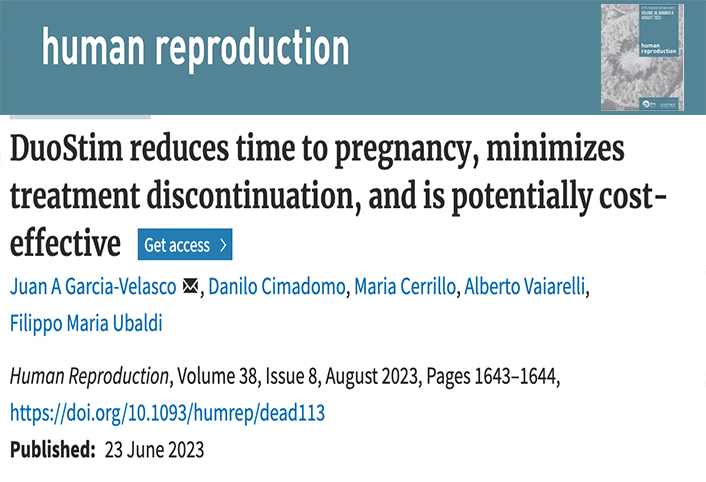
Juan A Garcia-Velasco, Danilo Cimadomo, Maria Cerrillo, Alberto Vaiarelli, Filippo Maria Ubaldi
Extract
We read the recent opinion article of the members of the ‘International Do No Harm Group in IVF’ entitled ‘Routine double-ovarian-stimulation (DuoStim) in poor responders lacks rationale, evidence, and follow-up’ (Tocci et al., 2023).
Firstly, DuoStim is an unconventional ovarian stimulation (OS) approach suitable to a very specific population of poor prognosis and advanced maternal age women; it is not a ‘routine’ practice as these authors claim in the article title. However, this is just the first misconception of their manuscript.
Secondly, Tocci et al. misreported two recent meta-analyses by claiming they ‘do not support the clinical utility of DuoStim’. Indeed, Glujovsky et al. wrote exactly the opposite: ‘DuoStim showed a higher number of total retrieved oocytes (MD 4.68, 95% CI 3.75 to 5.62) and MII oocytes (MD 3.35, 95% CI 2.54 to 4.15), almost doubling the number obtained in a Conventional stimulation’ and further that ‘unconventional approaches […]’ offer ‘similar outcomes to the conventional cycles but potentially with increased flexibility, within a reduced time frame’ (Glujovsky et al., 2020). Similarly, Sfakianoudis et al. wrote ‘DuoStim is correlated with a higher number of retrieved oocytes, mature MII oocytes, and good quality embryos in comparison to conventional stimulation. Additionally, luteal phase stimulation seems to be correlated with an equal or an even higher overall performance in comparison to follicular phase stimulation’ (Sfakianoudis et al., 2020). Based on data, all these statements are far from being not supportive of DuoStim.